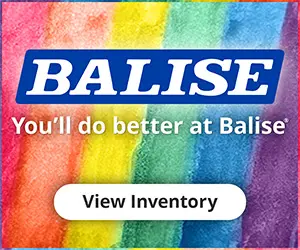
Firms Say New Talent Drawn by Mission, Culture, Opportunity
Engineering a Youth Movement

Ashley Sullivan, president of O’Reilly, Talbot & Okun.
Ashley Sullivan can think of plenty of reasons why someone might want to go into engineering.
“It is a very rewarding field where you get to see your work benefit your family and your community,” the president and CEO of Springfield-based O’Reilly, Talbot & Okun said. “And you’re always going to need civil engineers, so there’s job protection there. There’s so much opportunity in the field, whether you want to go into construction or consulting or the regulatory side. There’s a lot of different options, and each individual can find what’s right for them.”
That said, the industry is facing the same headwinds seen in other fields these days, ranging from construction to manufacturing to insurance: retirements outpacing the number of young people coming on board.
“We’ve had a lot of retirements; as quick as I hire, we have people retire or leave the industry,” Sullivan said. “We’re trying to grow, we’re trying to hire, and we make progress one year, and then a few months later, we might fall back. We’re trying to hire about five more by the end of the year, but, just like with everybody else, it’s been very challenging.
“Previously, being a smaller, local firm, we didn’t necessarily compete with the larger firms or state agencies because if somebody liked a small firm, they liked a small firm, versus a larger firm. Now we’re finding we’re going up against those agencies and larger firms,” she went on. “I’m not sure if that’s because of the hybrid or remote potential. We’ve really focused on the ones that want to work near where they live, but now it’s getting hard to do that. There are also a lot of competitive salaries out there, so we’ve had to adjust to that. It’s definitely a challenge.”
Westfield-based Tighe & Bond is at the other end of the hiring spectrum, boasting about 600 employees at 17 locations across the Northeast. The firm is growing significantly at a time when a surge of federal funding — from the $1.2 trillion Bipartisan Infrastructure Law of 2021 to the Inflation Reduction Act and CHIPS Act of 2022 — is creating plenty of opportunity for civil-engineering firms.
“They’re requiring technical talent throughout the country to do all the work that’s coming,” President and CEO Bob Belitz said, noting that the firm has more employees dedicated to recruiting and onboarding than in the past. “We’ve made an investment in that function because it’s such a big part of our business.”
He added that the firm’s broad footprint across the Northeast makes it easier to recruit and retain talent. “Before, if somebody was working for us and got married and moved to New Hampshire, Maine, or New York, they might have to leave us to go work for somebody else because we didn’t have offices there. Now we do. From a growth perspective, it helps to be able to transfer you among other offices.”

Bob Belitz says work opportunities for engineering firms are high right now, and so is the need to attract new talent.
Staff Photo
But with some turnover to be expected in a company this size, and with a goal of growing both organically and through acquisitions, Tighe & Bond needs to onboard more than 100 new employees each year, and doing so successfully requires it to stand out from its competitors in a number of ways, Belitz said, from its employee-ownership model to hybrid work schedules; from a strong benefits program to a broad mix of projects.
Sullivan said communicating the culture of a company to job seekers is also critical.
“When we’ve had conversations where we effectively communicate that, people are very interested in working here,” she said, adding that another factor is communicating a clear path to career advancement.
“One of the things I think is so great about engineering — particularly about civil engineering or the environmental engineering that we do — is that we make our community better.”
“I am looking for future business partners. You’re working with the people that are managing the business, you’re getting day-to-day experience in that, and there’s real, clear potential for somebody to be a stockholder, be on the board of directors, and guide the company sooner than they might at a larger company. We can give examples of that. So that’s something that we try to explain. We feel that, if we’re effective in communicating that, we’ll find the right people.”
Mission Driven
As a civil engineer teaching at a women’s liberal-arts college, Glenn Ellis, a professor of Engineering at Smith College, said his students often come to the field from a specific mindset — namely, social impact.
“The number-one thing I hear from students is they want to do some good for the world, to make the world a better place,” he told BusinessWest. “They’re very interested in sustainability. That’s the number-one draw for many students as an engineer. And you can really make an impact on all sorts of things.”
That line of thinking resonates with Sullivan. “One of the things I think is so great about engineering — particularly about civil engineering or the environmental engineering that we do — is that we make our community better,” she said. “We’re an important part of that, and you can see it.”
Ellis noted that the industry code of ethics now includes sustainability as a key tenet, which dovetails with what his students are demanding. But he also said young people are drawn to the sheer diversity of engineering and how broadly it impacts the world.
“The more young people know what an engineer is, the more they’re interested in it. Studies show that the reason why way fewer women than men are engineers is not because women leave these programs at a higher rate than men; they leave at the same rate. It’s that they don’t go into engineering programs to begin with.”
And the time to start capturing their interest, he added — not just for engineering but for all STEM fields, where women have been historically underrepresented — is not college or even high school, but middle school.
“I say to a lot of young people, ‘you know, everything you can see has been designed by engineers. Engineers literally designed the entire world.’”
“I think that’s the time to develop a STEM identity. When you ask kids in middle school if they want to be engineers, they say, ‘I don’t know what that is,’ or ‘that’s really boring; you just work on pipes and buildings.’”
Ellis spoke with one young girl who said she wasn’t interested in engineering, but she wanted to work in the medical realm, helping to design artificial limbs that will help people.
“I said, ‘that’s engineering — that’s bioengineering.’ Young people don’t know what engineering is, so you need to introduce them at a young age, show them that it’s not just building bridges and wearing hardhats. This is a creative profession, a collaborative profession. If you want to change the world, this is the place to do it.”
And employers know talented young engineers have options in choosing where to make their mark, so recruitment, onboarding, and benefits are all critical.
“When we think about our benefit programs, we need to think about things that are important to the younger generations,” Belitz noted, and these run the gamut at Tighe & Bond from student-loan assistance to wellness programs to pet insurance, but also include a strong focus on mentorship, learning, and professional-development opportunities, including the addition of a female mentoring program last year.
“We’re also always giving back to our communities, and we try to talk about that as much as we can when we’re recruiting people,” he went on. “Hopefully that total package, along with the work that we have in the backlog, is attractive to the younger and mid-career people, who are the hardest ones to retain.”
O’Reilly, Talbot & Okun, while a much smaller firm, is also in a growth mode.
“There is a lot of work to be done, and the clients need us to get their work done,” Sullivan said, adding that the industry is facing a bit of an experience gap as veterans retire and young engineers replace them.
“We knew this was coming, so you have to invest in your people and make sure that you’re narrowing that gap continuously,” she told BusinessWest. “One of the things that we’ve done — and that I continue to do — is really invest back in people, try to give them the skills and get them the training.
“And not just the technical training, but also business development, project management, and entrepreneurial skills that get you even further,” she went on. “That’s something that I knew I had to do five years ago, and I’ve continued to do that. We just finished a big team training about presentation skills, whether in a small meeting or a large group, but it was also about team building, communication, and all that.”
Making a Difference
Ellis said Smith has been graduating a few dozen engineers each year, and they’re entering a market that’s tilted somewhat to job seekers.
Conversely, for employers, “it’s very challenging,” Sullivan said. “It’s just really hard to find people right now. We’ve had some people with a verbal acceptance, and then a few weeks later, they get a counteroffer and stay where they are.”
Meanwhile, Ellis hopes more young people — particularly young women — get the message early on that this is a meaningful, impactful career with plenty of opportunity.
“Women are definitely more attracted to engineering when they can be involved in messy, complex societal issues, which actually is what engineering is all about. It’s all about taking math and science and solving problems for society,” he said.
“I say to a lot of young people, ‘you know, everything you can see has been designed by engineers. Engineers literally designed the entire world. You can go into it and move up in the world and make a difference.’”





